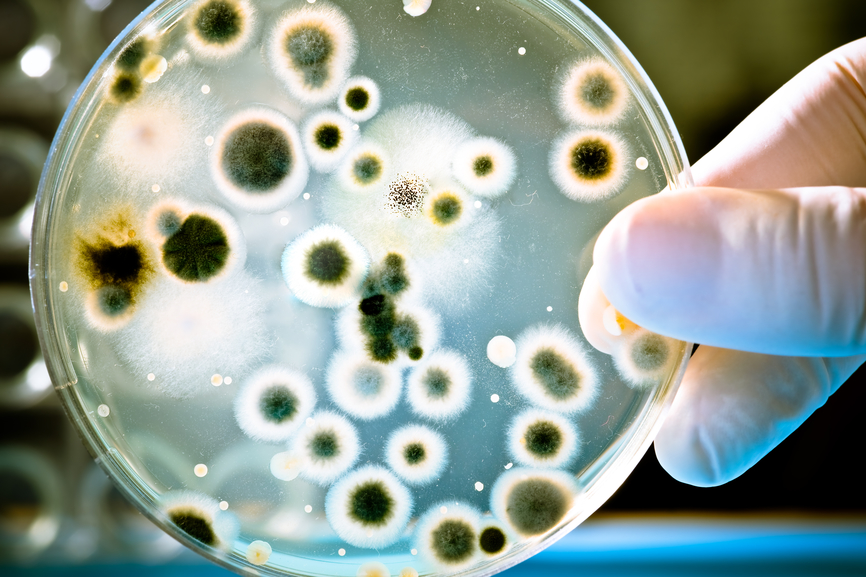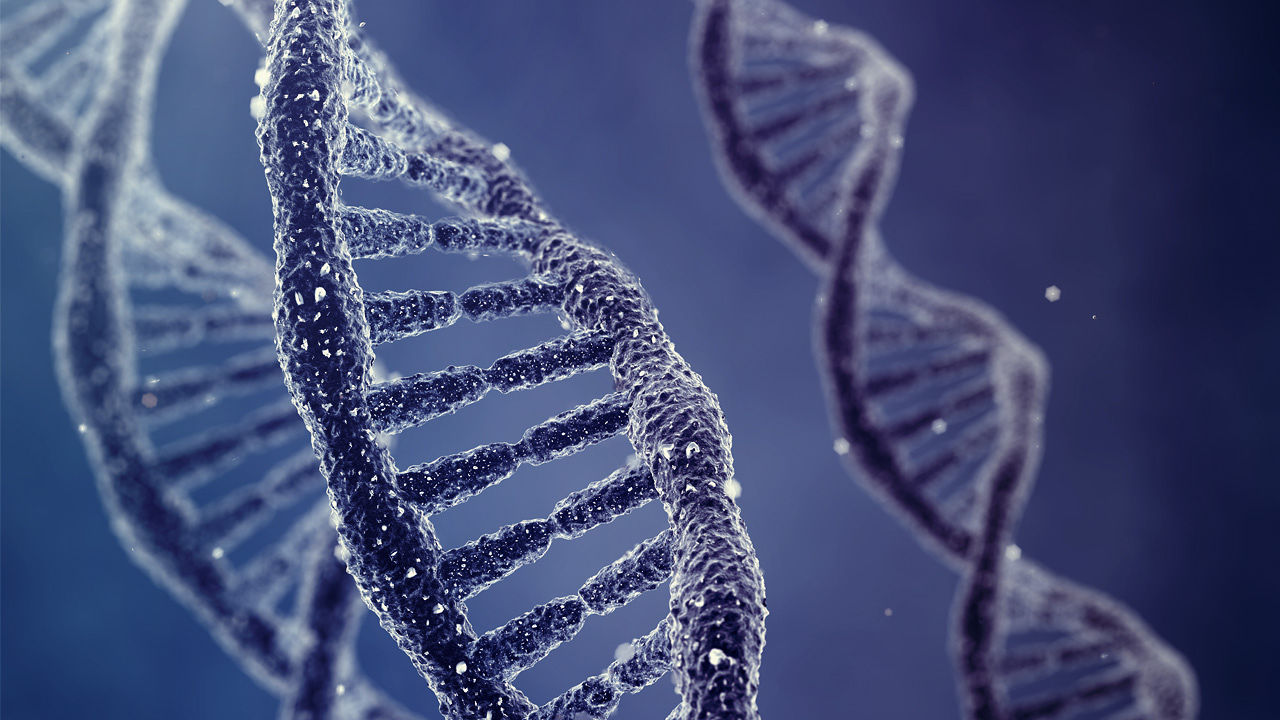Mold Toxicity
Many people are aware of detrimental substances such as asbestos, formaldehyde and tobacco smoke, however mycotoxins are widely unknown to the general population. Much emphasis is given to mycotoxins because approximately one third of the population has the inability to generate anti-bodies to “bag and tag” fatty toxins and remove them from the body. Mycotoxins are a type of fatty toxin that most individuals come in contact with at one time or another, so there must be a strong emphasis and awareness toward this type of toxin. There’s sufficient data to confirm this point of view as described below.
History of Mycotoxins
The three most well-known and abundant mycotoxins are primarily Aflatoxin, Ochratoxin and Trichothecene. The concept of sick building syndrome was first recognized in 1982, however today it’s better known as mold toxicity (1). Nearly all individuals display an effect to mycotoxins however if you do not present the subset of HLA–DRB–DBQ genetics (inherited trait), these toxins are excreted when individuals leave the toxic environment. For individuals with this genetic subset, storage occurs frequently; thus, causing a higher occurrence of the effects associated with mold toxicity.
In the early 1970s, energy conservation was a major issue in most industrialized nations. This energy crisis caused many changes in the construction of homes and buildings throughout the world, especially in the United States. Buildings and homes were designed with recycled ventilation to reduce energy costs, and large buildings were constructed with windows that were permanently shut to better control temperature (2).
Additionally, more inexpensive and lighter weight materials were developed and utilized to lower the amount of energy needed – cellulose based ceiling tiles and drywall, which mostly consist of recycled paper products. Water damage/leaks affect nearly everyone at one point or another, so the problem with utilizing these inexpensive, lightweight materials is their susceptibility to mold growth. Many common mold species such as Stachybotrys consume organic materials like cellulose in drywall as a food supply.
Recent studies indicate that individuals spent nearly 90% of their time indoors making them more vulnerable to these toxins (3). Many reasons contribute to why individuals suffer from this syndrome; however, there’s a wide variety of serious health ailments associated with mycotoxins that affect nearly every bodily system. We know it’s difficult with regimented schedules, working all the time and family obligations but we all need to get outside in the fresh air.
Current Research
Genetic research has pinpointed a subset of a gene, (HLA-DRB-DBQ) that plays a major role in this ailment. There are a few types of the subset, however if one does have this gene, their bodies can’t produce anti-bodies to remove toxins and subsequently individuals move toxins out of the body four hundred times slower than people without the gene (4). In other words, individuals with this gene store fatty toxins at a more significant rate then people without the gene.
The most abundant fatty toxins that individuals will encounter are mycotoxins and some individuals cannot build antibodies to any fatty toxins including benzene (commonly found in tobacco smoke), toluene (commonly found in paint products) mandelic acid, (by-product found in Accutane acne medication) and any other VOC.
It’s estimated that one third of the population are infected with this genetic subset, however this gene is a dominant gene. In other words, it’s always passed down to subsequent generations if only one parent has this subset. This also means that current mathematical modeling would push this percentage upwards of 40% by the year 2020. We must increase awareness and take advantage of protocols that can help people with these genetics.
Mycotoxins on the Cellular Level
Mycotoxins have been documented to greatly affect mitochondria and thus energy production (5). Additionally, they’ve been known to inhibit DNA and RNA synthesis as well as cause damage and mutations to the DNA (6,7).
By damaging your DNA, RNA and mitochondria you are affecting the innerworkings of the cell. You must concentrate on fixing the cells which is why there’s a strong emphasis given to mycotoxins and their removal.
By inhibiting DNA and RNA synthesis, the basic functions of DNA replication and cellular process are greatly affected. Mycotoxins, as well as other fatty toxins, are so damaging to the cell that it’s vital to utilize a protocol that not only removes mycotoxins, but can also reverse their damaging effects.
Mycotoxins and the Immune System
Many studies have been performed regarding mycotoxins and the immune system, however their most impactful effect remains immunosuppression (10). Mycotoxins can also cause asthma, allergic reactions as well as hypersensitivity (8). They cause changes in TNF-alpha which is one of the main regulators of the immune system as well as changes in IgE (9,11).
This shows that mycotoxins not only destroy and affect cellular processes, but they also affect the cell’s directly related components such as immune biomarkers. Toxins cause such massive immune suppression because they allow for pathogens to enter the brain and body completely unchecked. These pathogens such as Lyme and other co-infections are now free to build biofilms and establish homes in your bloodstream.
Mycotoxins and the Gut
Mycotoxins increase the toxic bacteria in the gut as well as inflammation in the gastrointestinal (G.I) (12,13). Additionally, it’s been proven to cause diarrhea, vomiting, nausea and abdominal cramps (13,14). This is another acquired abnormality that’s a direct relationship to mycotoxins which should confirm why it’s vital to remove these toxins from your body.
Mycotoxins and the Endocrine System
In terms of the endocrine system, mycotoxins have been proven to affect two primary hormones, progesterone and testosterone (15,16). Testosterone has been linked to both the production of neurotransmitters and the immune system while progesterone calms the brain as a natural Xanax type hormone. Thus, as mycotoxins begin to infiltrate the brain and body, it comes as no surprise that they can affect such a wide variety of bodily systems.
Mycotoxins and the brain
The brain is tremendously affected by mycotoxins. Its main effects include damage to the astrocytes, (thus the brain blood barrier (BBB), brain endothelial cells and the neutral cells causing cell apoptosis (cell death) and oxidative stress to the brain (20,21). Three different studies also show that mycotoxins can cause pituitary adenomas (17-19).
Mycotoxins and other Health Problems
Other regions affected by mycotoxins include joints (chondrocytes), pancreas (pancreatic lesions), liver (cancer), kidneys (damage) and the heart (cardiomyocytes) as well as causing myocardial lesions (22-25).
Understanding the Emphasis
Not only can mycotoxins cause tumors and various cancers, they destroy the very cells that are vital to protecting your brain, thus allowing it to function properly. You can’t fix the cell or any other health issue without removing mycotoxins.
It’s been outlined how mycotoxins can infiltrate the brain and body and cause massive problems. We hope you now understand the emphasis that’s given to these toxins. Not only are they prevalent in everyone’s life, but they are directly linked to nearly every health abnormality seen in today’s medicine. If you learn one thing from this article, please understand that mycotoxins are dangerous and much emphasis must be given to remove them and repair the damages caused by these dangerous toxins.
Works Cited
[1] Finningan, M. S., Pickering, C.A.C., Burge, P.S. 1984. The sick building syndrome: prevalence studies. Br Med J 289: 1573-1575.
[2] Cooley, J.D., Wong, W.C., Jumper, C.A., Straus, D.C.1998. Correlation between the prevalence of certain fungi and sick building syndrome. Occup Environ Med. 55:579-584.
[3] Teichman, K. Y. 1995. Indoor Air Quality: Research Needs. Occup Med. 10: 217-227.
[4] Shoemaker, Ritchie C., James Schaller, and Patti Schmidt. Mold Warriors: Fighting America’s Hidden Health Threat. Baltimore, MD: Gateway, 2005. Print
[5] “Toxic Effects of T-2 Toxin and Deoxynivalenol on the Mitochondrial Electron Transport System of Cardiomyocytes in Rats.” National Center for Biotechnology Information. U.S. National Library of Medicine, n.d. Web. 08 Feb. 2014. http://www.ncbi.nlm.nih.gov/pubmed/23719927.
[6] “Mycotoxicosis: Mechanisms of Immunosuppression.” National Center for Biotechnology Information. U.S. National Library of Medicine, n.d. Web. 08 Feb. 2014. http://www.ncbi.nlm.nih.gov/pubmed/1781158.
[7] “DNA Damage by Mycotoxins.” N.p., n.d. Web. 08 Feb. 2014. http://toxicology.usu.edu/endnote/04302008004.pdf.
[8] “Mold Remediation in Schools and Commercial Buildings: Appendix B – Introduction to Molds.” EPA. Environmental Protection Agency, n.d. Web. 08 Feb. 2014. http://www.epa.gov/mold/append_b.html.
[9] “Toxic and Other Non-IgE-mediated Effects of Fungal Exposures.” National Center for Biotechnology Information. U.S. National Library of Medicine, n.d. Web. 08 Feb. 2014. http://www.ncbi.nlm.nih.gov/pubmed/12906783.
[10] “Mycotoxins.” European Food Safety Authority. N.p., n.d. Web. http://www.efsa.europa.eu/en/topics/topic/mycotoxins.htm
[11] “[In Vitro Studies into the Influence of Ochratoxin A on the Production of Tumor Necrosis Factor Alpha by the Human Monocytic Cell Line THP-1].” National Center for Biotechnology Information. U.S. National Library of Medicine, n.d. Web. 08 Feb. 2014. http://www.ncbi.nlm.nih.gov/pubmed/11998373.
[12] “Mycotoxin Fumonisin B1 Increases Intestinal Colonization by Pathogenic Escherichia Coli in Pigs.” National Center for Biotechnology Information. N.p., n.d. Web. http://www.ncbi.nlm.nih.gov/pmc/articles/PMC201177.
[13] “About Mycotoxins.” Food Standards Agency. N.p., n.d. Web. 08 Feb. 2014. http://www.food.gov.uk/policy-advice/mycotoxins/about/#.UvcAYbRvis1.
[14] “Mycotoxins.” World Health Organization. N.p., n.d. Web. 08 Feb. 2014. http://www.who.int/ceh/capacity/mycotoxins.pdf.
[15] “Effects of the Mycotoxins Alpha- and Beta-zearalenol on Regulation of Progesterone Synthesis in Cultured Granulosa Cells from Porcine Ovaries.” National Center for Biotechnology Information. U.S. National Library of Medicine, n.d. Web. 08 Feb. 2014. http://www.ncbi.nlm.nih.gov/pubmed/14613819.
[16] “Effects of Fungal Metabolites on Testosterone Secretion in Vitro.” National Center for Biotechnology Information. U.S. National Library of Medicine, n.d. Web. 08 Feb. 2014. http://www.ncbi.nlm.nih.gov/pubmed/14613819.
[17] “Induction of Pituitary Tumors in Germ-free Rats Exposed to Aspergillus Versicolor.” National Center for Biotechnology Information. U.S. National Library of Medicine, n.d. Web. 08 Feb. 2014. http://www.ncbi.nlm.nih.gov/pubmed/2295080
[18] http://rivm.openrepository.com/rivm/bitstream/10029/9410/1/257852004.pdf
[19] Yazar, Selma, and Gülden Z. Omurtag. “Fumonisins, Trichothecenes and Zearalenone in Cereals.” National Center for Biotechnology Information. U.S. National Library of Medicine, 31 Oct. 2008. Web. 08 Feb. 2014. http://www.ncbi.nlm.nih.gov/pmc/articles/PMC2635619..
[20] “Unusual Astrocyte Reactivity Caused by the Food Mycotoxin Ochratoxin A in Aggregating Rat Brain Cell Cultures.” National Center for Biotechnology Information. U.S. National Library of Medicine, n.d. Web. 09 Feb. 2014. http://www.ncbi.nlm.nih.gov/pubmed/15994020.
[21] Doi, Kunio, and Koji Uetsuka. “Mechanisms of Mycotoxin-Induced Neurotoxicity through Oxidative Stress-Associated Pathways.” National Center for Biotechnology Information. U.S. National Library of Medicine, 15 Aug. 2011. Web. 09 Feb. 2014. http://www.ncbi.nlm.nih.gov/pmc/articles/PMC3179161.
[22] “About Mycotoxins.” Food Standards Agency. N.p., n.d. Web. 08 Feb. 2014. http://www.food.gov.uk/policy-advice/mycotoxins/about/#.UvcAYbRvis1.
[23] “Toxic Effects of T-2 Toxin and Deoxynivalenol on the Mitochondrial Electron Transport System of Cardiomyocytes in Rats.” National Center for Biotechnology Information. U.S. National Library of Medicine, n.d. Web. 08 Feb. 2014. http://www.ncbi.nlm.nih.gov/pubmed/23719927.
[24] “Myocardial and Pancreatic Lesions Induced by T-2 Toxin, a Trichothecene Mycotoxin, in Swine.” National Center for Biotechnology Information. U.S. National Library of Medicine, n.d. Web. 08 Feb. 2014. http://www.ncbi.nlm.nih.gov/pubmed/3727316
[25] “T-2 Toxin Enhances Catabolic Activity of Hypertrophic Chondrocytes through ROS-NF-κB-HIF-2α Pathway.” National Center for Biotechnology Information. U.S. National Library of Medicine, n.d. Web. 08 Feb. 2014. http://www.ncbi.nlm.nih.gov/pubmed/3727316.




